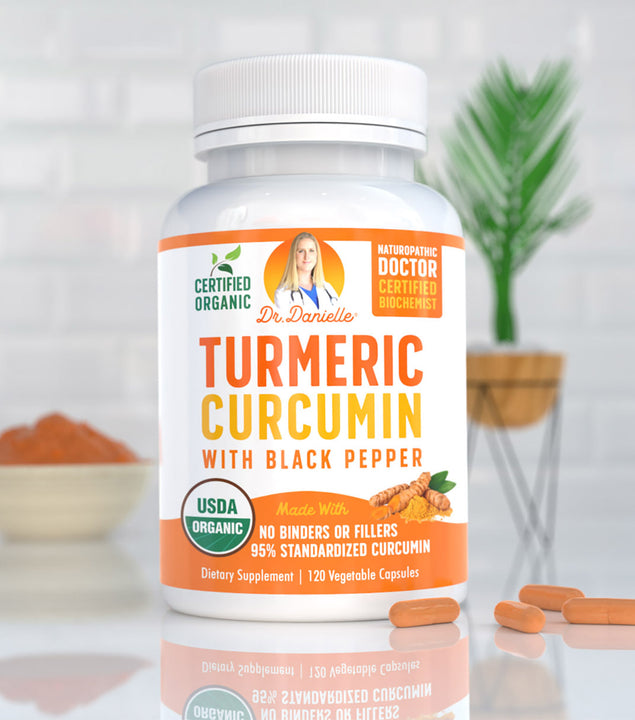Unless you’ve been living under a rock, you must have heard about hyperbaric chambers and the increasing number of people who are vouching for them. Even celebrities, for example, Justin Bieber, have endorsed the use of these chambers to supposedly get rid of all the toxins that have been accumulating in their bodies over the course of several years.
People who have spent time in these oxygen-rich chambers have constantly been reporting how they feel more invigorated and youthful after a quick “hyperbaric oxygen therapy” session, with no signs of any side effects, compelling more people to try this therapy out. But what is a hyperbaric chamber, what goes on inside it, and can this near-miraculous therapy really be a potential therapy for the future? Let’s find out.
What Is A Hyperbaric Chamber, Anyway?
A hyperbaric chamber is a sealed chamber used to create a specialized environment by raising the internal pressure by several folds. The therapy for which it is used is known as hyperbaric oxygen therapy which has been used for the treatment of several chronic medical problems like gas embolism, decompression sickness, and carbon monoxide poisoning.
While hyperbaric oxygen therapy or HBOT seems like a completely new concept, many athletes and celebrities have been using and promoting it for years. Tim Tebow and Terrel Owens are among these people who have been utilizing HBOT for quicker recovery from their sports-related injuries. Michael Jackson used to sleep in a hyperbaric chamber every single night.
So what is it that goes on inside a hyperbaric chamber that has intrigued so many people? The concept of what happens inside it is often difficult for people to understand. In layman’s terms, HBOT is a procedure normally sought by people looking for a supplemental or an alternative medical solution to their already existing medical issue.
In HBOT, pure oxygen is supplied to the person lying down inside a hyperbaric chamber for a specific amount of time. This time duration is usually different for different individuals and mostly depends on their purpose of use. During the entire length of the session, pure oxygen is provided in this pressurized chamber allowing patients to breathe in an atmospheric pressure that might be up to three-folds higher than the regular air.
The aim of hyperbaric oxygen therapy is to increase the oxygen levels in the patient’s blood, and the purpose of increasing the atmospheric pressure is to allow the delivery of more oxygen molecules to the cells around the body. Keep in mind that within a pressurized atmosphere, the body is better able to absorb more oxygen, move it around, and supply it to all major organs.
When this oxygen reaches any area of damage, for example, swollen vessels or worn-out muscles, it triggers the release of multiple healing chemicals. These chemicals encourage the body to regenerate itself by producing more cells and recovering the existing, damaged ones.
Normally, two different types of oxygen chambers are used for HBOT:
Monoplace Chamber
This type of chamber intends to work for one person at a time. It contains a plastic tube similar to that attached to an MRI machine. The patient is made to enter this chamber which is later pressurized using pure oxygen.
Multiplace Chamber
This type of chamber can be used simultaneously for more than one individual. What goes inside it is pretty similar to the monoplace chamber with the only difference of using masks to supply oxygen to the patients.
How Does Hyperbaric Oxygen Therapy Work?

You must already know that 21 percent of every breath you take comprises pure oxygen. However, within a hyperbaric chamber, you are bound to consume almost pure oxygen. This flow of 100 percent pure oxygen is often combined with an increase in the atmospheric pressure to improve the absorptive and distributive rates of oxygen throughout the body.
Under normal circumstances, a standard human body only uses hemoglobin to carry oxygen molecules around the body. However, during HBOT, the oxygen absorption begins occurring beyond this chemical as it is being compressed and forced to get absorbed by all deeper tissues of the body.
As a consequence, any areas of the body that have been receiving poor blood circulation or no blood supply at all are finally able to get access to oxygen-rich plasma. In this way, they can finally begin healing.
The use of HBOT has significantly increased during the past few years. Many hospitals are now offering this treatment to different patients simultaneously for better recovery. It is also offered at individual practice centers or medical spas for non-medical uses as well.
A typical session of hyperbaric oxygen therapy normally lasts between one to two hours and can be repeated more than once. (1)
Approved Medical Benefits of Hyperbaric Chambers
In light of available scientific evidence, hyperbaric oxygen therapy has been approved for the treatment of the following conditions: (2)
- Gas embolism/ air embolism
- Gas gangrene
- Carbon monoxide poisoning with or without cyanide poisoning
- Decompression sickness
- Acute traumatic ischemia, including compartment syndrome and crush injuries
- Central retinal artery occlusion
- Arterial insufficiencies
- Severe anemia
- Osteomyelitis
- Necrotizing soft tissue infection
- Intracranial abscess
- Compromised flaps and grafts
- Acute burn injury (thermal)
The primary indications of the HBOT include decompression sickness, carbon monoxide poisoning, and air embolism.
Decompression sickness refers to a condition that occurs due to a fast decrease in the atmospheric pressure around you, either in water or air. The problem most commonly hits deep-sea divers or scuba divers but can also occur in a person traveling at higher altitudes, especially in an unpressurized environment. What happens is that as you go deeper into the water or higher in the air, the pressure level increases which causes the blood levels of oxygen and nitrogen to increase as well. While this increased oxygen is quickly used by the body, nitrogen still remains inside. In such a condition, when you come back to the surface with normal air pressure too quickly, this rapid change of environmental pressure forces nitrogen to leave the blood, enter the tissues and start bubbling. These bubbles are what deteriorate your condition, leading to bone pains, joint aches, and much more alarming symptoms.
Unapproved Medical Benefits of Hyperbaric Chambers
Despite the rising popularity of hyperbaric chambers for the treatment of multiple medical issues, the FDA has warned people that its efficacy and safety profile is yet to be established for many health problems. These include: (3)
- Asthma
- Alzheimer’s disease
- Cerebral palsy
- Parkinson’s disease
- Stroke
- Injury to the spinal cord
- Brain trauma
- Migraines
- Hepatitis
- HIV/AIDS
Non-Medical Benefits of HBOT

Versatility is a prominent feature of hyperbaric oxygen therapy as its use is not strictly limited to medical purposes only. Men and women of different age groups are now using hyperbaric chambers for better cellular regeneration, improved blood circulation, and higher recovery speeds.
Have you ever noticed how your skin suddenly begins to glow after a session of exercise? This is because your body tissues have just received a higher supply of oxygen-rich blood. Now imagine if this starts occurring at regular intervals with the help of hyperbaric chambers. The results will obviously be better, vibrant, and more youthful skin. With this therapy, oxygen can reach every corner of your body and brain which means lesser age spots, saggy skin, damaged skin cells, and wrinkles. It can also significantly shorten the recovery times between sports injuries.
Some people also rely on HBOT for getting rid of hangovers of moderate to severe levels. Because the supply of oxygen to deeper tissues of the body is drastically increased during this therapy, it has also been used for fighting the symptoms like nausea and fatigue that are commonly associated with binge-drinking.
Are Hyperbaric Chambers Safe?
While thousands of people are currently vouching for the high efficacy and safety of hyperbaric chambers, the truth is it is definitely not a cure for every single medical condition. In order for this therapy to be the most effective, it has to be prescribed by a suitable doctor who well-understands its clinical implications. Medical experts also encourage undergoing hyperbaric oxygen therapy in a clinical setting and with the availability of medical supervision.
Because HBOT involves the buildup of a high-pressure environment, there are certain risks associated with it such as (4,5,6)
- Retinopathy and bronchopulmonary dysplasia in premature babies. This is why this therapy is not recommended to be used in children and infants
- Injury to the airways
- Inflammation of the lung linings
- Accelerated growth of cataracts
- Short-sightedness or myopia (short-term)
- Increased oxidative stress leading to a higher risk of seizures
- Mild barotrauma to the sinuses and ears
- Lung dysfunction and breathing difficulties
Moreover, hyperbaric chambers can also induce discomfort in people with low blood sugar, hypertension, and claustrophobia, and may even induce heart failure. (7)
Concluding Thoughts
The human body is capable of healing itself impressively, but sometimes, it may require some additional assistance, such as from hyperbaric chambers. These chambers supply your body with high-flow oxygen in a pressurized environment to speed up all healing processes. While the medical and non-medical applications of HBOT are numerous, it is still recommended to consult with a doctor first before trying it out for yourself.








